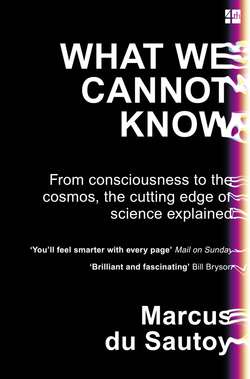Читать книгу What We Cannot Know: Explorations at the Edge of Knowledge - Marcus Sautoy du - Страница 18
THE MATHEMATICS OF NATURE
ОглавлениеIsaac Newton is my all-time hero in my fight against the unknowable. The idea that I could possibly know everything about the universe has its origins in Newton’s revolutionary work Philosophiae Naturalis Principia Mathematica. First published in 1687, the book is dedicated to developing a new mathematical language that promised the tools to unlock how the universe behaves. It was a dramatically new model of how to do science. The work ‘spread the light of mathematics on a science which up to then had remained in the darkness of conjectures and hypotheses’, declared the French physicist Alexis Clairaut in 1747.
It is also an attempt to unify, to create a theory that describes the celestial and the earthly, the big and the small. Kepler had come up with laws that described the motions of the planets, laws he’d developed empirically by looking at data and trying to fit equations to create the past. Galileo had described the trajectory of a ball flying through the air. It was Newton’s genius to understand that these were examples of a single phenomenon: gravity.
Born on Christmas Day in 1643 in the Lincolnshire town of Woolsthorpe, Newton was always trying to tame the physical world. He made clocks and sundials, constructed miniature mills powered by mice, sketched countless plans for buildings and ships, and drew elaborate illustrations of animals. The family cat apparently disappeared one day, carried away by a hot-air balloon that Newton had made. His school reports, however, did not anticipate a great future, describing him as ‘inattentive and idle’.
Idleness is not necessarily such a bad trait in a mathematician. It can be a powerful incentive to look for some clever shortcut to solve a problem rather than relying on hard graft. But it’s not generally a quality that teachers appreciate.
Indeed, Newton was doing so badly at school that his mother decided the whole thing was a waste of time and that he’d be better off learning how to manage the family farm in Woolsthorpe. Unfortunately, Newton was equally hopeless at managing the family estate, so he was sent back to school. Although probably apocryphal, it is said that Newton’s sudden academic transformation coincided with a blow to the head that he received from the school bully. Whether true or not, Newton’s academic transformation saw him suddenly excelling at school, culminating in a move to study at the University of Cambridge.
When bubonic plague swept through England in 1665, Cambridge University was closed as a precaution. Newton retreated to the house in Woolsthorpe. Isolation is often an important ingredient in coming up with new ideas. Newton hid himself away in his room and thought.
Truth is the offspring of silence and meditation. I keep the subject constantly before me and wait ’til the first dawnings open slowly, by little and little, into a full and clear light.
In the isolation of Lincolnshire, Newton created a new language that could capture the problem of a world in flux: the calculus. This mathematical tool would be key to our knowing how the universe would behave ahead of time. It is this language that gives me any hope of gleaning how my casino dice might land.
